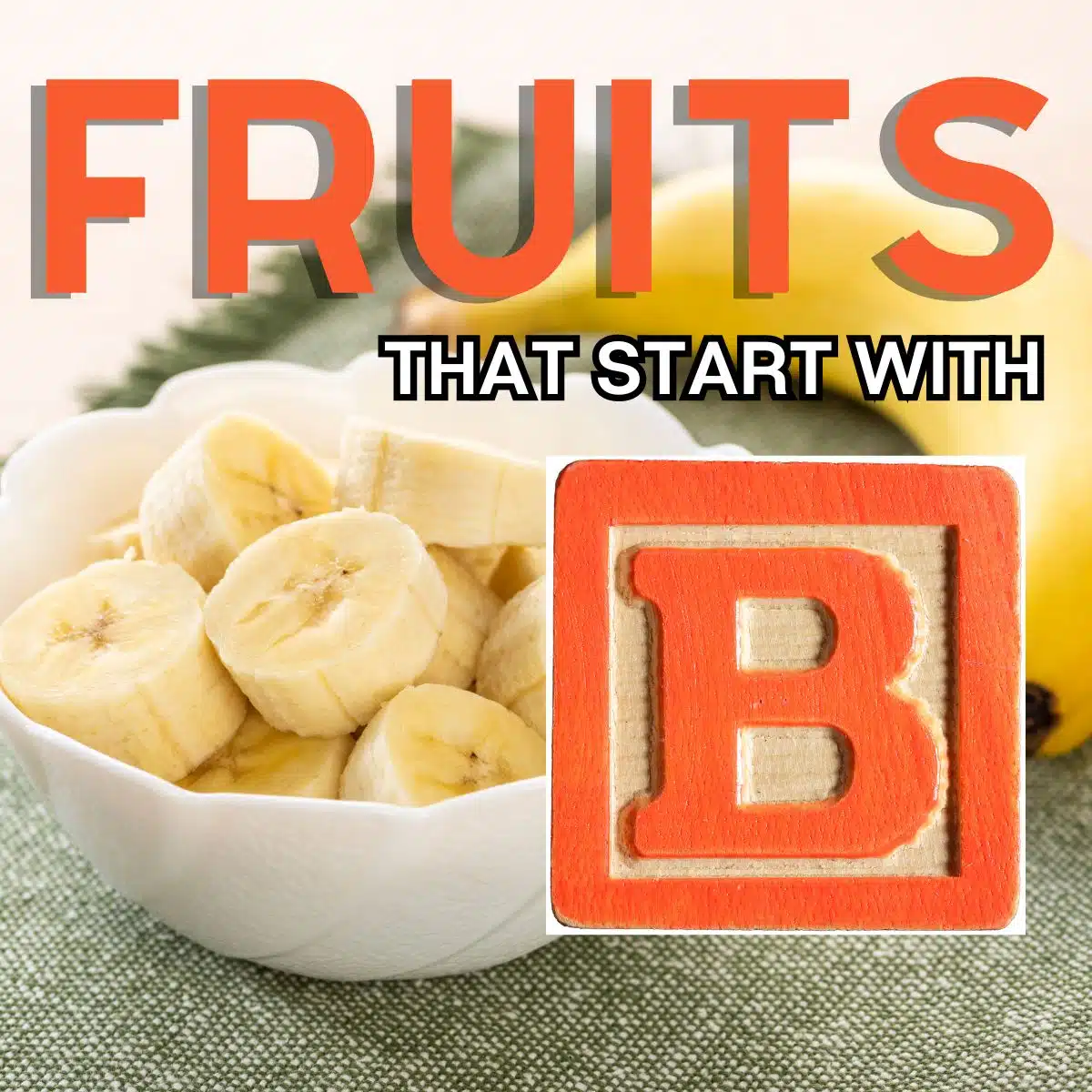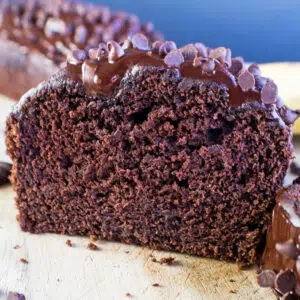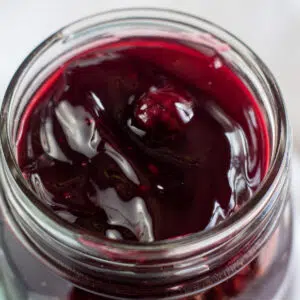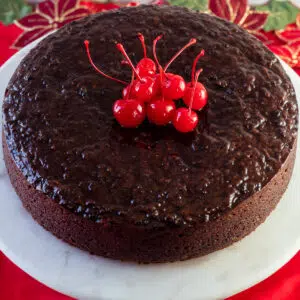Fruits That Start With B: 29+ fabulous fruits that begin with the letter B for food challenges, trivia, or cooking through the alphabet! You can find them all right here, from bananas to boysenberries and everything in between. Keep reading to discover just how many incredible fruits start with B!

30 Fruits That Start With The Letter B
You may be familiar with bananas, blueberries, blood oranges, and black cherries, but there are so many more unique and flavorful fruits to try starting with B! In fact, just writing out this list I learned of a few new ones myself!
There are berries, citrus, tropical fruits, and even gourds that start with B. Have you ever eaten a barbadine fruit? It's never too late to try!
Jump to:
- 30 Fruits That Start With The Letter B
- 1. Bael
- 2. Banana
- 3. Barbadine
- 4. Barbados Cherry
- 5. Barberry
- 6. Batuan
- 7. Beach Plum
- 8. Bearberry
- 9. Beechnut
- 10. Betel Nut
- 11. Bignay
- 12. Bilberry
- 13. Bilimbi
- 14. Biriba
- 15. Bitter Gourd
- 16. Black Apple
- 17. Black Cherry
- 18. Black Mulberry
- 19. Black Raspberry
- 20. Black Sapote
- 21. Blackberry
- 22. Black Currant
- 23. Blood Lime
- 24. Blood Orange
- 25. Blueberry
- 26. Boysenberry
- 27. Brazil Nut
- 28. Brazilian Guava
- 29. Breadfruit
- 30. Brush Cherry
- 📖 Recipe Card
- Fruits That Start With B: Blackberry Pie Bars (+More Tasty Fruits To Try In Recipes!)
- 💬 Comments & Reviews
1. Bael
Aegle marmelos, or as it is more commonly known, 'bael', is a sweet and fragrant fruit that grows from rare trees native to Southeast Asia. Typically, people enjoy them fresh, though they are also harvested for juice or dried. The flavor is often compared to marmalade with a woodsy aroma.
2. Banana
Bananas are the first thing that comes to mind for many people when asked to pick a fruit that starts with B. In fact, bananas hold the top spot for the most popular fruit in the United States (followed by strawberries and grapes if you were wondering). There are more than 1,000 different banana varieties in the world!

3. Barbadine
The fruit of a vining plant from the passion fruit family. Barbadine is a large, oblong shape with green to yellow skin and sweet pulp that has a floral aroma.
The flavor is milder than passion fruit but similar. Barbadine juice is often combined with cinnamon, sugar, or other spices, to make teas and punches.
4. Barbados Cherry
You may be familiar with Barbados cherries, especially if you took a look at my post on fruits that start with A because it's just another name for acerola cherries.
Technically, they aren't cherries at all. Instead, they are more of a tropical berry-like fruit. Either way, they smell lovely and taste delicious!
5. Barberry
The tart red berries of a shrub that was originally native to Europe, Africa, and Asia but now grows all over the world. These berries are high in nutrients and antioxidants and have been used for their medicinal properties for hundreds of years.
6. Batuan
The sour fruit of a tree native to the forests of Southeast Asia. When unripe, it looks similar to a green tomato though the color becomes more yellow as the fruit matures. They are described as being sour, though not acidic.
7. Beach Plum
A species of plum that grows in the sandy coastal soils of the Eastern United States. The flavor of a beach plum is described as being a cross between an apricot, strawberry, and plum but with thin, tart skin on the outside.
8. Bearberry
The fruit of a small evergreen shrub that is native to Northern Asia, Europe, and North America. The small red berries are a vital snack for forest life and a particular favorite for bears.
Bearberries are safe for raw consumption but don't have much flavor. When you cook them, their natural sweetness comes out, and these berries really shine!
9. Beechnut
Tasty, nutrient-dense nuts that are harvested from beech trees. The nuts come in spiky pods that are reminiscent of velcro.
Though a few raw beechnuts won't hurt you, it's safer to cook them. Beechnuts contain a toxin called saponin glycoside which causes gastric problems if consumed in excess.
10. Betel Nut
Betel nuts, or areca nuts, are the seeds of the areca palm tree. These nuts have natural alkaloids that produce adrenaline when ingested, so some people eat them for a boost of energy!
Despite being eaten for hundreds of years, WHO (the World Health Organisation) considers betel nuts a carcinogen because of their link to oral and esophageal cancer. The red residue of these nuts can also permanently stain the enamel of your teeth if eaten too frequently.
11. Bignay
A berry-like fruit that is native to Southeast Asia and Northern Australia. The flavor is sweet, tart, and a little acidic. Bignays can be enjoyed raw or cooked. When they are fresh and ready for consumption, they have a deep red to purple color.
12. Bilberry
The berries of a bush that is native to northern parts of Europe and Asia. These dark blue berries look strikingly similar to blueberries but tend to be ever-so-slightly larger in size. The taste, however, is not the same. Bilberries are very acidic, so despite being safe to eat raw they are best when cooked into jams or jellies.
13. Bilimbi
The fruit of a tropical tree that grows in Indonesia. Bilimbi is green and roughly 3-4 inches long with 5 faintly angled sections.
The skin of the fruit is sour, and the flesh is crisp, so they taste best when preserved. Bilimbi is also used to season various Indonesian recipes.
14. Biriba
Biriba (aka rollinia) is a large tropical fruit with soft spiky yellow skin. The flesh inside has a gelatinous consistency that is very creamy. The flavor is compared to lemon custard or caramel and the fruit is usually eaten raw out of hand.
15. Bitter Gourd
Bitter gourd, also called bitter melon, is the fruit of a tropical vine that is considered a staple ingredient for many types of Asian cuisine and in Central and South America. This is one fruit that is certainly named for how it tastes. In fact, it is so bitter it can make your mouth feel dry.
Cooked, it tastes similar to zucchini and is admittedly somewhat forgettable. It is popular because of the sour flavor that, when used correctly, can make some of the most memorable dishes.
16. Black Apple
Black diamond apples are a rare variety of apple from the Huaniu family that is grown in the Tibetan region of Nyingchi. The color is actually more of a deep purple than black and is a direct result of the 3,500-meter altitude in which they grow.
17. Black Cherry
Black cherry bushes are the largest member of the rose family and are natively grown in Iowa. The flavor of black cherries is sweeter and mellower than typical red cherries.

18. Black Mulberry
The trees that produce black mulberries are native to Western Asia and the Middle East. The ripe fruit, stems, and leaves are often used to make holistic medicines. These juicy, sweet and sour berries can be eaten raw when ripe.
19. Black Raspberry
A species of raspberry that grows in the northeastern part of the US. The berries are smaller than modern-day raspberries, with a sweet and tart taste that has earthy undertones.
20. Black Sapote
Black sapote is a variety of persimmon that has a sweet caramel/chocolate taste. The flesh has the same consistency as papaya, and the thin skin, while inedible, is easy to remove.
21. Blackberry
An edible berry produced from a bramble plant that can be found growing on every continent except for Antarctica. Ripe blackberries are sweet and slightly tart, but immature berries are red and very bitter.

22. Black Currant
Black currants are considered a powerhouse fruit that improves the immune system and blood flow. These berries are native to Asia and Northern Europe and have a tart flavor similar to raspberries but a sweet flavor similar to grapes.

23. Blood Lime
Blood limes are a hybrid citrus fruit that was created by the Commonwealth Scientific and Industrial Research Organization to research salt-resistant crops. Since their creation in 2004, these fruits have seen no commercial production, though they are still being considered for transport.
Blood limes are much smaller than modern limes with a sweeter flavor and can be eaten with the skin on.
24. Blood Orange
A variety of oranges with vibrant red flesh (almost blood-colored). The flavor is more complex than naval oranges, with a balanced sweetness and tartness. The taste has been compared to a raspberry mixed with citrus.

25. Blueberry
A group of perennial flowering plants that produce blue to purple berries. Blueberries are native to North America and have been harvested for over 1,300 years with the first batch being commercially produced in the early 1900s. Ripe blueberries are sweet and floral with woodsy undertones.

26. Boysenberry
Boysenberries are a hybrid made from European raspberries and European blackberries. These juicy berries have all the sweetness and floral aroma of a raspberry with the tartness of a blackberry.
27. Brazil Nut
The nut of a South American tree with the same name. Brazil nuts are packed with antioxidants and are very nutrient-dense. These nuts have a smooth, buttery texture and nutty flavor that can be enjoyed blanched or eaten raw.
28. Brazilian Guava
Brazilian guava is a tropical fruit that is native to the Brazilian portion of the Amazon. The fruits have highly concentrated pulp-filled centers that have a punch of acidic sour flavor.
The centers of the fruit are usually diluted and added to sorbets, juices, and jams.
29. Breadfruit
A flowering tree from the jackfruit and mulberry family. Breadfruit contains a large amount of starch, hence the name, and is therefore primarily eaten cooked. It can be fried, roasted, baked, or ground into flour. The flavor is said to be similar to freshly baked bread or cooked potatoes.
30. Brush Cherry
Berries are produced by an evergreen tree or shrub that is native to Australia and New Zealand. Brush cherries have thick and glossy dark-red skin with a crisp texture and tangy flavor. They make delicious jams and jellies!
Do you have a favorite recipe using any of these fruits that start with B? Tell me about it in the comments below so I can give it a try!
>>>>See all of my recipes here<<<<
Do you love a recipe you tried? Please leave a 5-star 🌟rating in the recipe card below and/or a review in the comments section further down the page.
Stay in touch with me through social media @ Pinterest, Facebook, Instagram, or Twitter! Subscribe to the newsletter today (no spam, I promise)! Don't forget to tag me when you try one of my recipes!
📖 Recipe Card
Fruits That Start With B: Blackberry Pie Bars (+More Tasty Fruits To Try In Recipes!)
Ingredients
Blackberry Pie Bars
- ¾ cup butter (softened - 12 tablespoons, or 1½ sticks butter)
- 1½ cups sugar
- ½ teaspoon salt
- 3 large eggs (at room temperature)
- 1½ teaspoon vanilla extract
- 2¼ cups all-purpose flour
- 21 oz blackberry pie filling (1 21-ounce can or see my recipe)
Vanilla Glaze
- ½ cup confectioners' sugar
- 1 tablespoon heavy cream (or whole milk, or half & half)
- ½ teaspoon vanilla extract
(Note: 2x or 3x only changes the ingredient list)
Instructions
Blackberry Pie Bars
- Preheat your oven to 350°F (175°C) and lightly grease a 9x13 baking pan with butter or non-stick cooking or baking spray.
- Using a mixer, cream together the butter, sugar, and salt.
- Next, add the vanilla extract into the bowl. Then add your eggs, one at a time, mixing in between each addition (*see note). If your mixture starts to curdle, add a tablespoon or two of flour).
- Mix in the flour until the dough is combined, making sure not to overmix. Save 1 cup of the dough for the topping and set it aside.
- In your greased pan, spread the dough in an even layer over the bottom. Afterward, top the dough with the blackberry pie filling. Drop the 1 cup of dough that you had set aside in rounded spoonfuls over the top of the pie filling layer.
- Bake at 350°F (175°C) for 30-35 minutes, or until the cobbler bars are a golden brown color and the topping is no longer doughy. Remove the pan from the oven and set it on a wire cooling rack. Allow the bars to cool completely before topping them with icing.
Vanilla Glaze
- In a small bowl combine the confectioners' sugar, heavy cream, and vanilla. Add more cream or sugar as needed until you reach a good consistency for drizzling.
- Once the bars are completely cooled, drizzle the glaze over the top. Then you can cut them and serve or allow the glaze to set before cutting.
Notes
- If you're out of canned blackberry pie filling, try my easy homemade blackberry pie filling!
- I love the combination of blackberry and lime. If you have a lime around, zest it and sprinkle it over your glaze!
- Store any leftover blackberry pie bars in a sealed container on the counter for up to two days (without the glaze). If using any dairy-based icing or glaze, you must refrigerate your leftover bars.
- To freeze your blackberry pie bars, don't add the icing until after they have been defrosted. Wrap them tightly in foil and transfer and place them into a freezer bag. Thaw overnight in the fridge and serve within 3 months of freezing.



Comments
No Comments